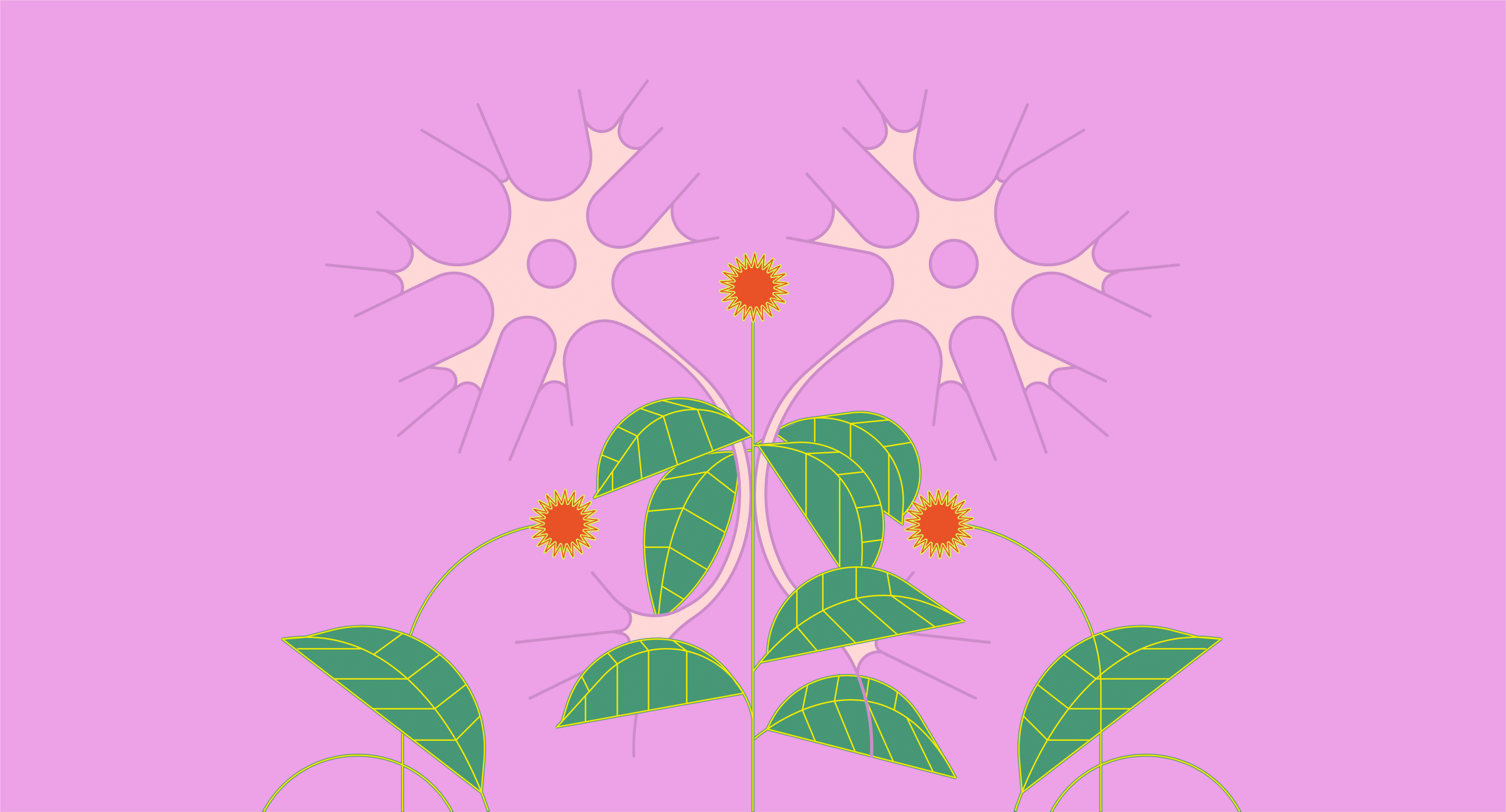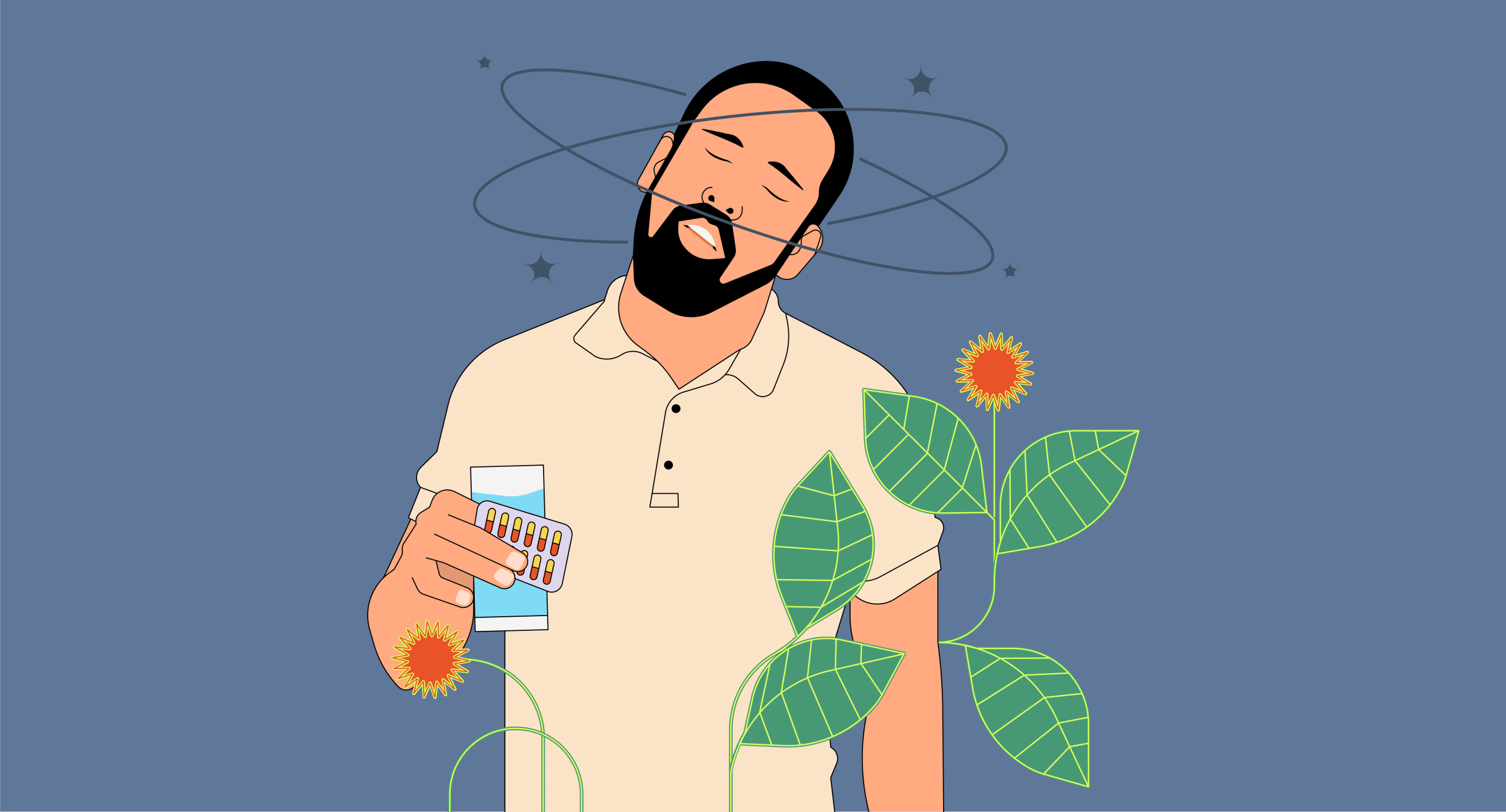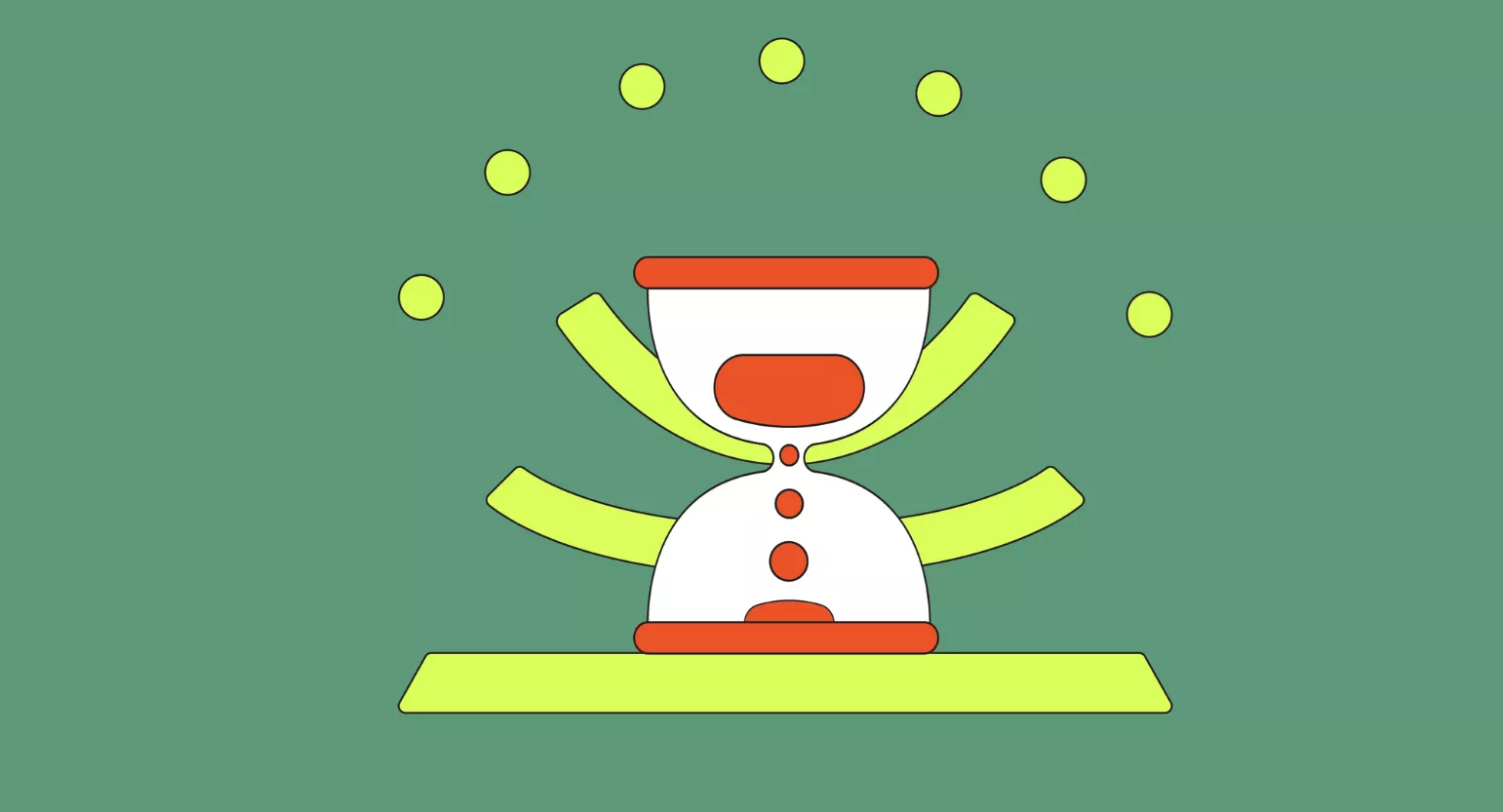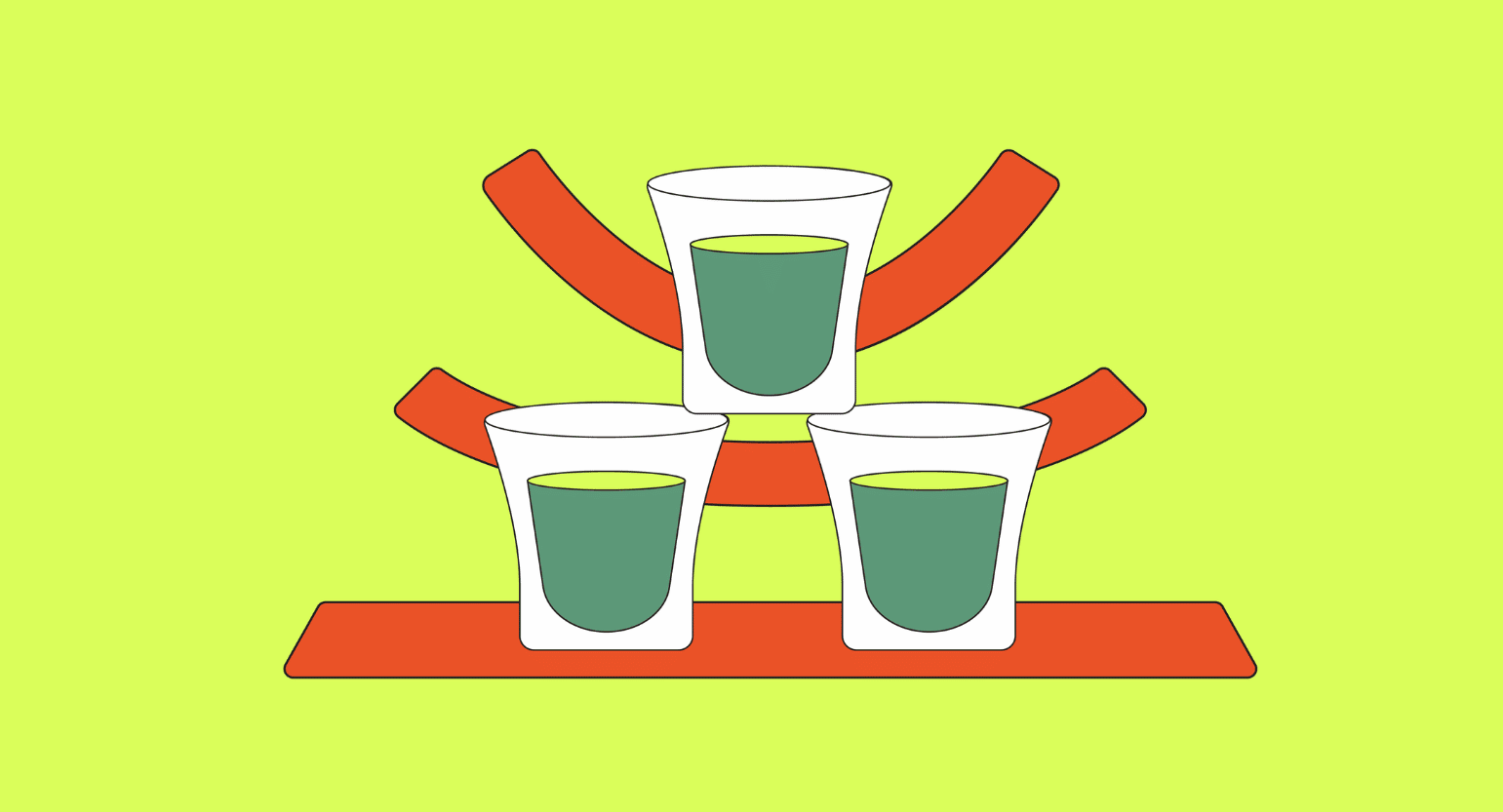What Is Kratom?
Kratom (Mitragyna speciosa) is an herb from Southeast Asia with an impressive array of effects. It’s used in traditional Asian medicine to treat chronic pain, insomnia, and anxiety, and some strains may have nootropic qualities.
There are three main kratom strains, red, white, and green, each having slightly different properties. Red strains are sedating and often used for pain relief and relaxation, white strains are stimulating and suitable for energy, and green strains offer a mix of both stimulating and sedating effects.
Can Kratom Help With Nerve Pain?
Pain relief is one of kratom’s primary uses and can help people manage conditions that otherwise require more powerful and dangerous painkillers. Red strains are the most sedating and are the most commonly recommended strains for pain relief.
But what about nerve pain specifically?
Kratom can help with nerve pain, and understanding why requires a closer look at how kratom relieves pain. Even though kratom is not an opioid, it functions by interacting with the body’s opioid receptors. The alkaloids in kratom — predominantly mitragynine and 7-hydroxymitragynine — regulate opioid receptor activity, blocking pain signals before they’re transmitted to the brain [1].
This opioid-like action makes kratom helpful in treating nerve pain since it dulls all pain regardless of the cause. By contrast, pain-relievers that function by reducing inflammation or relieving muscle tension won’t affect neuropathic pain. People who fail to find relief by taking anti-inflammatories or muscle relaxers usually have far more success with kratom.
Kratom, Dopamine, & Nerve Pain
Kratom is psychoactive, which interacts with the brain’s neurotransmitters, affecting their activity and changing their levels. One such neurotransmitter is dopamine.
Dopamine is regarded as a pleasure chemical in popular media, but research suggests it plays a more significant role in motivation [2]. Dopamine levels change and react to experiences and guide future behavior, determining what actions are preferable.
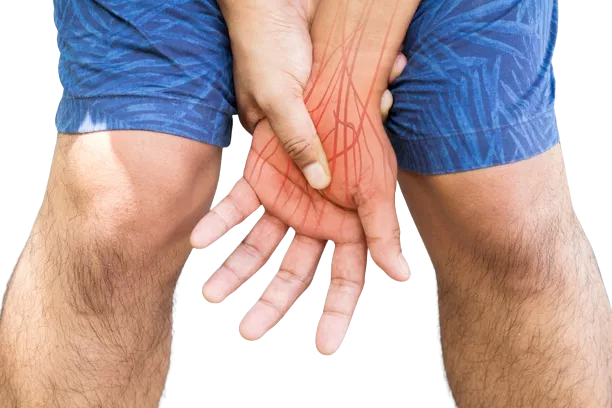
Some studies show that kratom actively binds to D1 dopamine receptors, changing dopamine concentrations in the brain and receptor sensitivity over time [3]. These changes lead to altered perceptions of pain, helping people deal with their pain and allowing them to do more with less discomfort.
Kratom, Serotonin, & Nerve Pain
Serotonin is another crucial neurotransmitter affected by kratom. It’s primarily responsible for regulating our mood, cognitive functions, learning ability, and memory, although it has other roles outside the central nervous system.
According to modern research, kratom may increase serotonin absorption, making it more potent and active in the brain [4]. Although more research is needed, early indications suggest that this mechanism is responsible for creating kratom’s euphoric and mood-enhancing effects.

Kratom’s effect on serotonin absorption doesn’t directly mitigate pain but can profoundly impact pain perception. By boosting serotonin absorption, kratom can help reduce anxiety, improve a person’s outlook, and relieve some of the depression chronic pain sufferers often feel.
Best Kratom Strains for Relieving Nerve Pain
Red strains are the best kratom strains for nerve pain relief. They’re more sedating and are better natural pain relievers than green or white strains by a wide margin. Some people have good experiences using more potent green strains for pain relief, although only for moderate cases.
Kratom’s analgesic properties come primarily from two alkaloids, mitragynine and 7-hydroxymitragynine. Of the two, 7-hydroxymitragynine is the more potent pain reliever [5], so strains with higher 7-hydroxymitragynine concentrations are better if pain management is your primary focus. Mitragynine plays a lesser role than 7-hydroxymitragynine in pain relief. It gives kratom the stimulating properties apparent in low doses.
Red Bali Kratom
Red Bali is one of the most popular strains of kratom. It’s a potent pain reliever without being overwhelming and helps put users at ease. Most Red Bali users say it’s smooth and relaxing with a hint of stimulation at lower doses.
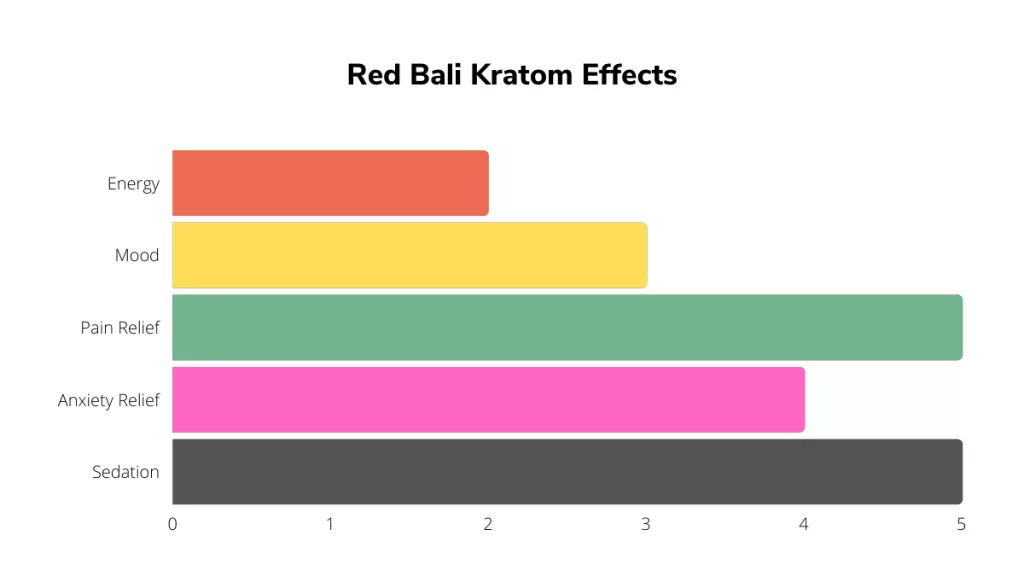
→ Find This Strain on Star Kratom.
Red Maeng Da Kratom
If Red Bali isn’t strong enough, Red Maeng Da is the next strain to try. It’s considerably more potent than Red Bali, boasting higher 7-hydroxymitragynine concentrations and proportionally higher pain relief. Some people find Red Maeng Da too strong, although it is the strain of choice for people hoping to dull the severe pain.
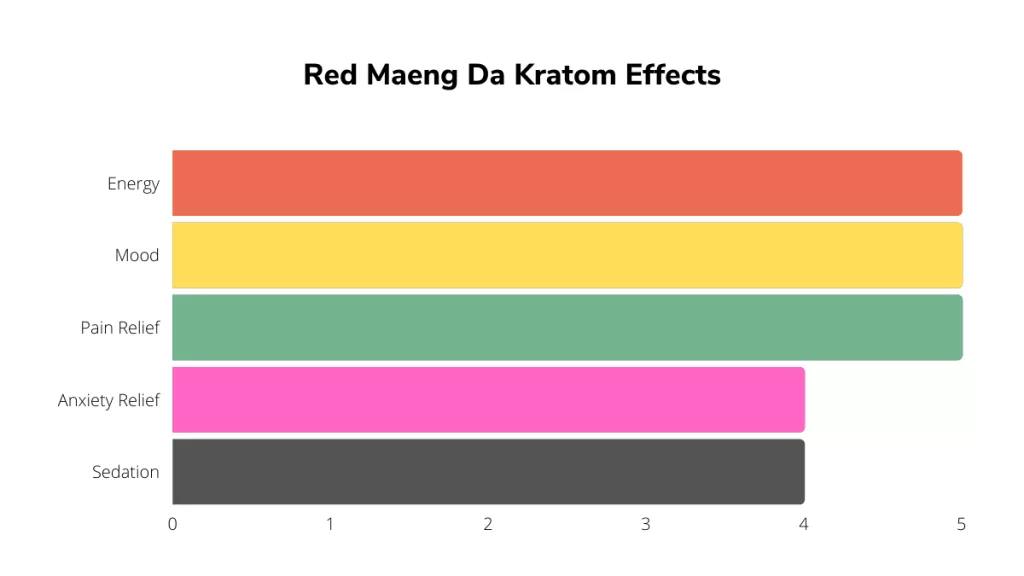
→ Find This Strain on VIP Kratom.
Red Borneo Kratom
Most people say that Red Borneo isn’t as good for pain as Red Bali or Red Maeng Da, but that doesn’t mean you should discount it immediately. According to most users, Red Borneo is a pleasant, relaxing strain and can help you relax despite discomfort. Everyone reacts to different strains in different ways, making it a game of trial and error to find the best option.
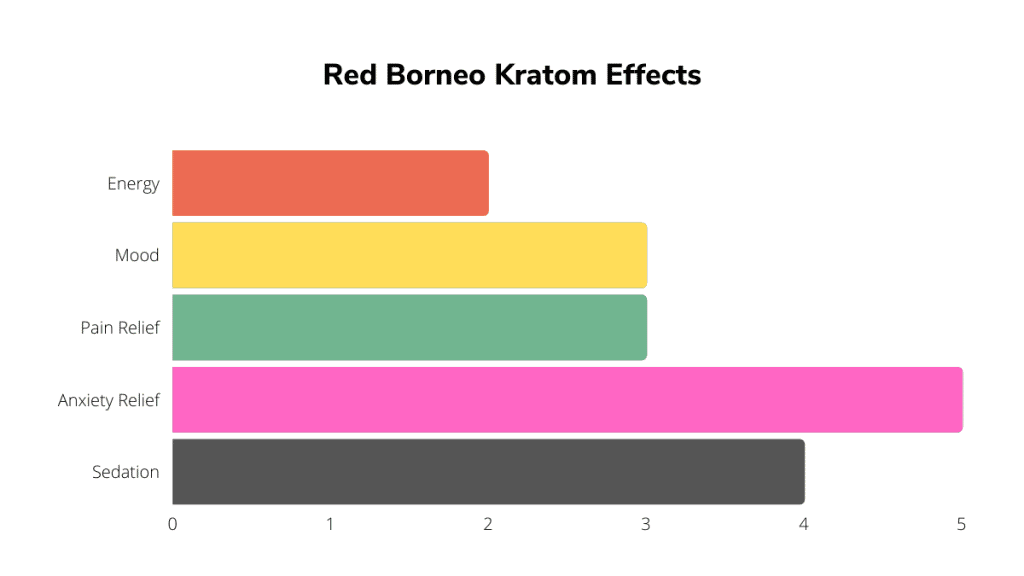
→ Find This Strain on Kona Kratom.
Risks of Using Kratom for Nerve Pain Relief
Kratom is an excellent alternative to traditional nerve pain medications, but it doesn’t come without risks. Side effects of kratom include instability, confusion, memory impairment, nausea, constipation, and diarrhea. Some users also say it makes them feel jittery and can worsen anxiety.
Side effects are more common in higher doses in the 6-10 gram range, so limiting your intake is the best weapon to use against them. Individual factors like age, metabolism, weight, and experience can change your likelihood of experiencing side effects, so start slowly and only increase your dose when you feel comfortable doing so.
The most significant risk of using kratom is addiction. Even though kratom is not an opioid, it can cause similar dependence. Experts suggest limiting kratom use to five days per week or fewer and taking at least one week off from using kratom after one to two months of regular use.
Is It Safe to Take Kratom with Other Pain Medication?
You should always consult a doctor before combining medications, especially pain relievers. Pain medication is notoriously finicky — mixing kratom with opiates or other pain medication can cause severe reactions and side effects.
Kratom is a natural herb but is a potent analgesic in its own right, making it unwise to combine it with other pain medications.
Here are some comparisons between kratom and some common medications for relieving nerve pain.
Kratom vs. Elavil for Nerve Pain
Elavil (amitriptyline) is a tricyclic antidepressant used to treat anxiety, depression, and insomnia, and it may also help some people improve their mood and energy level. Elavil is sometimes used to treat nerve pain from chronic conditions like diabetic neuropathy, spinal cord injuries, and nerve damage from diseases like shingles.
Kratom is a natural compound and is generally considered less addictive than Elavil. It’s available without restriction in most areas and is significantly cheaper than the prescription antidepressant. Kratom is also used more specifically for pain relief, whereas Elavil is more commonly used to treat depression and anxiety.
Comparing Elavil & Kratom:
| 🍃 Kratom | 💊 Elavil | |
| Availability | Unrestricted | Prescription-Only |
| Natural or Synthetic? | Natural | Synthetic |
| Active Ingredient | Mitragynine, 7-hydroxymitragynine, & other alkaloids | Amitryptiline |
| Indications | Increase energy and concentration, pain relief, opiate withdrawal, anxiety, insomnia | Anxiety & depression, insomnia, low-energy |
| Dosage | 2-12 grams per day | 40-100 mg per day |
| Common Side Effects | Nausea, vomiting, extreme tiredness, dizziness, anxiety, confusion, constipation | Weight gain, increased hunger, headaches, blurred vision, dizziness, dry mouth, sleepiness, constipation |
| Level of Risk | Low-Moderate | High |
| Risk of Addiction | Moderate | High |
| Cost | $10 – $20 an ounce (~30 grams) | $300-$350 for thirty 50 mg capsules |
Kratom vs. Sinequan for Nerve Pain
Sinequan (doxepin) is an antidepressant medication often prescribed to treat anxiety and depression that can also help alleviate nerve pain. Patients with nerve pain often develop depression, making Sinequan applicable in many cases of chronic pain. However, there are some indications that Sinequan may also interrupt pain signals directly by increasing neurotransmitters in the spinal cord.
Sinequan is considered a more potent pain reducer than kratom, but it also comes with a higher level of risk and addiction. Kratom is also specifically used for pain relief, whereas Sinequan is used for anxiety and depression and treats pain as a side effect.
Comparing Sinequan & Kratom:
| 🍃 Kratom | 💊 Sinequan | |
| Availability | Unrestricted | Prescription-Only |
| Natural or Synthetic? | Natural | Synthetic |
| Active Ingredient | Mitragynine, 7-hydroxymitragynine, & other alkaloids | Doxepin |
| Indications | Increase energy and concentration, pain relief, opiate withdrawal, anxiety, insomnia | Anxiety, depression, insomnia |
| Dosage | 2-12 grams per day | 75-150 mg per day |
| Common Side Effects | Nausea, vomiting, extreme tiredness, dizziness, anxiety, confusion, constipation | Drowsiness, dry mouth, constipation, blurry vision, constipation, dizziness, difficulty urinating |
| Level of Risk | Low-Moderate | High |
| Risk of Addiction | Moderate | High |
| Cost | $10 – $20 an ounce (~30 grams) | $250-$300 for thirty 25 mg capsules |
Kratom vs. Cymbalta for Nerve Pain
Cymbalta (duloxetine) is a serotonin-norepinephrine reuptake inhibitor (SNRI), which means it regulates serotonin and norepinephrine levels in your central nervous system. It is commonly used to treat nerve pain, pain from arthritis, fibromyalgia, and insomnia.
As an SNRI, Cymbalta is considered to be far more addictive than kratom, so it comes with a higher risk for abuse. It can be dangerous to take long-term, but no evidence suggests that kratom is dangerous over long consumption periods. However, Cymbalta is a high-potency drug manufactured partly to reduce nerve pain, making it a more pointed and effective solution than kratom.
Also see: Does Kratom Interact With Duloxetine?
Comparing Cymbalta & Kratom:
| 🍃 Kratom | 💊 Vyvanse | |
| Availability | Unrestricted | Prescription-Only |
| Natural or Synthetic? | Natural | Synthetic |
| Active Ingredient | Mitragynine, 7-hydroxymitragynine, & other alkaloids | Duloxetine |
| Indications | Increase energy and concentration, pain relief, opiate withdrawal, anxiety, insomnia | Nerve pain, arthritis, diabetic neuropathy, fibromyalgia, insomnia, anxiety, depression |
| Dosage | 2-12 grams per day | 60 mg per day |
| Common Side Effects | Nausea, vomiting, extreme tiredness, dizziness, anxiety, confusion, constipation | Nausea, dry mouth, reduced hunger, excessive sweating, constipation, fatigue, dizziness, increased blood pressure |
| Level of Risk | Low-Moderate | High |
| Risk of Addiction | Moderate | High |
| Cost | $10 – $20 an ounce (~30 grams) | $275-$300 for thirty 60 mg capsules |
How Common is Nerve Pain?
Nerve pain is extremely common, with an estimated 20% of adults experiencing nerve-related pain. Diabetes is the most common cause of neuropathy in otherwise healthy adults, accounting for approximately 30% of cases. Injuries, diseases like shingles and syphilis, and vitamin B deficiencies are the following most frequent causes. Vitamin B deficiency is more common in older people since absorption of vitamin B decreases with age.
Once nerves are damaged, the body can’t repair them, which is part of the reason neuropathic pain is so common. There are some slight improvements over long periods, but unfortunately, nerve pain is often a lifelong condition.
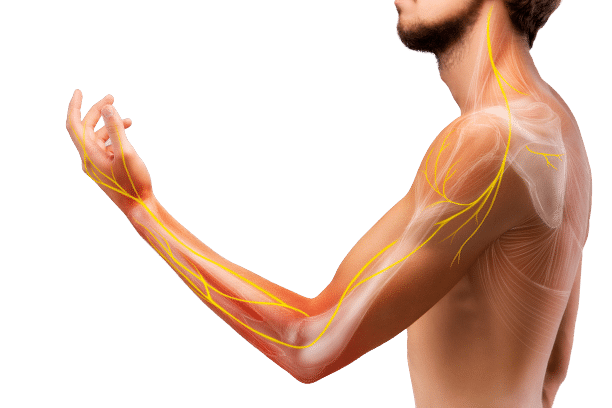
Signs & Symptoms of Nerve Pain
The most common nerve pain symptom is sudden shooting pain, often associated with movement. The nerve pain from herniated disks and other spinal conditions often leads to stabbing pains in the back, hips, and legs, sometimes experienced as a burning or hot sensation.
Tingling and numbness are also common signs of nerve pain. Many people with nerve damage experience an unpleasant pins-and-needles feeling, similar to how limbs feel when they fall asleep. Numbness and tingling don’t always occur with movement or in a particular position and can seemingly arise randomly.
Some people with nerve pain find their condition worsens with contact. Light touching that triggers disproportionately painful events may be a sign of neuropathy.
Finally, nerve pain is also accompanied by emotional or psychological trauma, such as depression, insomnia, and anxiety.
Common Treatments for Nerve Pain
Prescription drugs are the most common treatment for nerve pain, but they’re not the only option. People are increasingly turning to natural remedies like kratom to help manage their conditions, especially when prescription medication doesn’t have the desired effect.
Physical therapy is an excellent option for treating some forms of nerve pain. Targeted stretching and strengthening the right muscles can help relieve tension and relieve pressure off damaged nerves. This is especially effective for injury-related nerve pain like herniated disks.
Psychological therapy is often highly beneficial for people who suffer from nerve pain. Managing painful conditions every day takes a mental toll and can lead to depression. Speaking with a trained mental health professional can help people maintain a positive attitude and decrease their pain indirectly. Other techniques for relaxation, like meditation, can also help in some cases.
Also see: Tips to Manage Pain From a Golf Injury.

Key Takeaways: Can Kratom Help With Nerve Pain?
Kratom is a great option for people suffering from nerve pain and can work better than prescription medication in some cases. It is a natural analgesic that can help people manage their pain by blocking pain signals before they reach the brain. Kratom also helps people relax, taking tension off tight muscles, helping people loosen up and sleep more easily at night.
Kratom compares favorably to common prescription drugs used to treat nerve pain, like Elavil, Sinequan, and Cymbalta, since it is cheaper and doesn’t require a prescription. Many people use kratom to battle their nerve pain, especially when other approaches fail to make a significant difference.
Using kratom is not risk-free, so responsible use is required to avoid unpleasant side effects and addiction. Success in using kratom relies on limiting your weekly intake, taking extended breaks every one to two months, and controlling your dose are essential. Kratom should never be combined with other pain medication or other prescription drugs due to the risk of dangerous interactions.
- Eastlack, S. C., Cornett, E. M., & Kaye, A. D. (2020). Kratom—Pharmacology, clinical implications, and outlook: a comprehensive review. Pain and therapy, 9(1), 55-69.
- Bromberg-Martin, E. S., Matsumoto, M., & Hikosaka, O. (2010). Dopamine in motivational control: rewarding, aversive, and alerting. Neuron, 68(5), 815-834.
- Stolt, A. C., Schröder, H., Neurath, H., Grecksch, G., Höllt, V., Meyer, M. R., … & Becker, A. (2014). Behavioral and neurochemical characterization of kratom (Mitragyna speciosa) extract. Psychopharmacology, 231(1), 13-25.
- Johnson, L. E., Balyan, L., Magdalany, A., Saeed, F., Salinas, R., Wallace, S., … & Grundmann, O. (2020). Focus: Plant-based Medicine and Pharmacology: The Potential for Kratom as an Antidepressant and Antipsychotic. The Yale Journal of Biology and Medicine, 93(2), 283.
- Spetea, M., & Schmidhammer, H. (2019). Unveiling 7-Hydroxymitragynine as the Key Active Metabolite of Mitragynine and the Promise for Creating Novel Pain Relievers.

